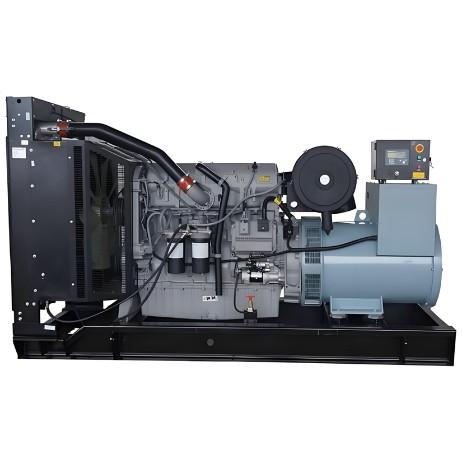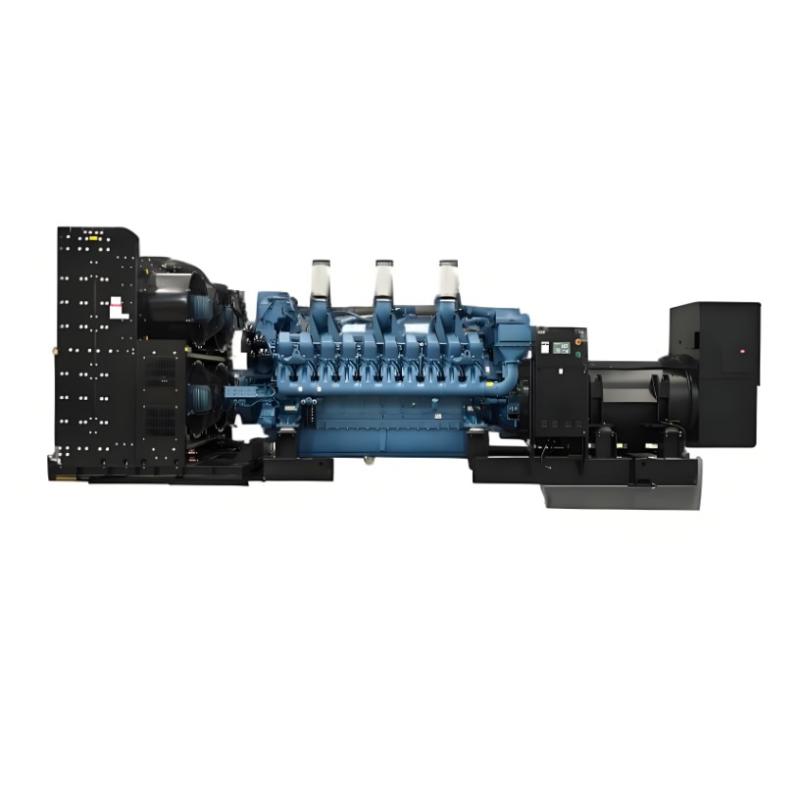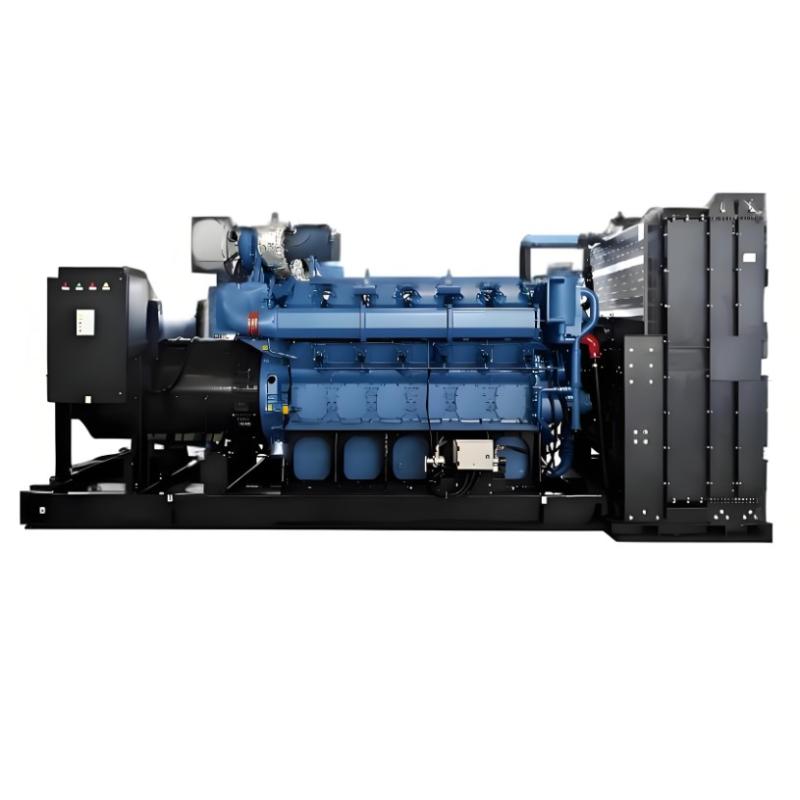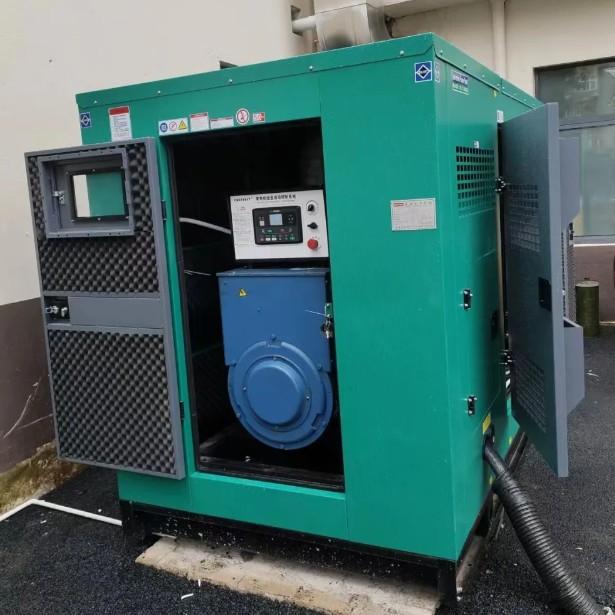Mas posibl ba nga ipaghimo ang duha ka generators aron madaghan ang ilang power output?
Ang paghimo og duha ka generators aron madaghan ang total nga power output mao ang posible, apan kinahanglan nga matuman ang pipila ka kondisyon ug mapatuman ang angkop nga mga pamaagi. Ang praktika niining sa sistema sa kuryente gitawag og parallel operation o paralleling. Tungod sa pagoperasyon sa daghang generators sa parallel, sila mahimong maghatag og kuryente sa mas dako nga loads, ngadto sa paghatag og mas taas nga total nga output. Apan, ang parallel operation dili lang simple nga pisikal nga koneksyon; giya sa kompleho nga elektrikal ug control teknolohiya.
1. Basic Principles of Parallel Operation
Kini nga ang duha o labaw pa nga generators mogoperasyon sa parallel, sila kinahanglan mog-operasyon sa synchronous, sigurado nga ang ilang output voltage, frequency, ug phase maayo nga gipakighubad. Kon wala, makapukaw sa current surges, damage sa equipment, o instability sa sistema. Ang pangunahon nga objektibo sa parallel operation mao ang:
Madaghan ang Total Output Power: Tungod sa paralleling sa daghang generators, mahimong hatagan og mas dako nga amount sa kuryente ang mas dako nga loads.
Enhance System Reliability: Kon usa ka generator mabag-o, ang uban pa mahimong magpatuloy sa paghatag og kuryente, sigurado nga ang sistema adunay continuity.
Optimize Load Distribution: Dynamically adjust the output power of each generator based on actual load demand to prevent overloading any single generator.
2. Conditions for Parallel Operation
Arong matuman ang safe ug reliable nga parallel operation, ang sumusunod nga kondisyon kinahanglan matuman:
Same Rated Voltage: Ang output voltages sa duha ka generators kinahanglan parehas. Pwede ninyo isipon kon usa ka generator nag-output og 400V, ang uban usab kinahanglan mag-output og 400V.
Same Rated Frequency: Ang output frequencies sa duha ka generators kinahanglan parehas. Kasagaran, ang AC generators mog-operasyon sa 50Hz (sa China, Europe, etc.) o 60Hz (sa US, etc.). Kon ang frequencies dili parehas, makapukaw sa phase difference tali sa generators, resulta sa current surges.
Same Phase Sequence: Para sa three-phase generators, ang phase sequence kinahanglan consistent. Inconsistent phase sequences makapukaw sa unbalanced currents, posible nga makadaog sa generators o load equipment.
Synchronous Operation: Ang output voltage waveforms sa generators kinahanglan synchronized, meaning sila mag-reach sa sama nga voltage peak sa sama nga panahon. Sa synchronization, kasagaran gigamit ang synchronizing indicator o automatic synchronizer aron detect ug adjust ang phase angles sa generators.
Load Sharing: Sa panahon sa parallel operation, importante nga sigurado nga ang load ma-evenly distribute sa tanang generators. Uneven load distribution makapukaw sa usa ka generator nga ma-overload habang ang uban mog-operasyon sa light load. Ang modern nga generator sets kasagaran na-equip sa automatic load sharing devices nga adjust ang output power sa bawat generator batas sa load demand.
3. Methods of Parallel Operation
Ang parallel operation mahimong ma-achieve pinaagi sa duha ka primary methods:
Parallel Operation of Identical Generators: Kini ang pinaka-simple ug pinaka-reliable nga method. Tungod kay ang generators adunay parehas nga electrical parameters ug technical specifications, ang synchronization ug load sharing mas sayon matuman. Daghan sa mga manufacturers naghatag og generators nga adunay built-in nga parallel operation capabilities, allowing users to connect them according to the manual.
Parallel Operation of Different Generators: Tungod kay teoretikal nga possible, ang paralleling sa different brands o models sa generators kinahanglan og mas dako nga technical support ug equipment. Ang differences sa electrical parameters (such as voltage, frequency, and phase sequence) ug control system compatibility makapukaw sa challenges. Sa mga cases niini, recommended ang external paralleling controllers o synchronizing devices aron ensure proper synchronization ug load sharing.
4. Advantages of Parallel Operation
Increased Total Output Power: Tungod sa paralleling sa daghang generators, mahimong ma-achieve ang mas taas nga total nga power output, suitable para sa applications nga nagkinahanglan og high power, such as large buildings, factories, and data centers.
Enhanced System Redundancy: Kon usa ka generator mabag-o, ang uban pa mahimong magpatuloy sa paghatag og kuryente, ensuring system continuity. Kini importante para sa critical facilities like hospitals, airports, and communication base stations.
Flexible Load Management: Batas sa actual load demand, ang output power sa bawat generator mahimong dynamically adjusted aron i-prevent ang overloading or underutilizing sa any single generator, extending the lifespan of the equipment.
Lower Initial Investment: Ang pag-buy sa multiple smaller generators ug operating them in parallel mahimong mas cost-effective konpare sa pag-buy sa single large generator. Additional, ang smaller generators mas sayon maintain ug replace.
5. Challenges and Considerations for Parallel Operation
Tungod kay adunay advantages, ang parallel operation usab nagpakita og pipila ka challenges ug considerations:
Synchronization Difficulty: Ensuring that the voltage, frequency, and phase of two generators are perfectly aligned is a complex process, especially when paralleling different brands or models. Professional synchronization equipment and expertise are required.
Load Sharing: During parallel operation, it is crucial to ensure that the load is evenly distributed among the generators. Uneven load distribution can lead to one generator being overloaded while another operates under light load, affecting system efficiency and safety.
Protection and Control Systems: Parallel-operated generators require robust protection and control systems to prevent issues such as overloading, short circuits, and frequency fluctuations. Additionally, communication and coordination between the generators are necessary to ensure they work together seamlessly.
Maintenance and Servicing: A parallel-operated generator system is more complex than a single generator, requiring more maintenance and servicing. Regular inspections and maintenance of the generators and their control systems are essential to ensure long-term stable operation.
6. Applications of Parallel Operation
Ang parallel operation widely used sa various fields:
Data Centers: Data centers require high-power uninterruptible power supply (UPS) systems to ensure continuous operation of servers and other critical equipment. By paralleling multiple generators, sufficient backup power can be provided, enhancing system redundancy.
Industrial Production: Large factories and manufacturing enterprises need substantial power supply, especially in industries where power continuity is critical. Paralleled generators can provide backup power during grid failures, ensuring uninterrupted production.
Healthcare Facilities: Hospitals and other medical institutions heavily rely on a stable power supply. Any power outage can endanger patient safety. By paralleling multiple generators, reliable backup power can be provided to ensure the normal operation of medical equipment.
Construction Sites: Construction sites often have significant temporary power needs, and power supply can be unstable. By paralleling multiple small generators, sufficient power can be supplied to the site, enhancing system flexibility.
Emergency Power Systems: In natural disasters or emergencies, emergency power systems are crucial. By paralleling multiple generators, reliable power support can be provided to affected areas, ensuring smooth rescue operations.
Summary
Combining two generators to increase power output is feasible, but it requires strict synchronization conditions, including matching voltage, frequency, phase sequence, and phase angle. Parallel operation can enhance the total output power, system redundancy, and flexibility, making it suitable for various applications that require high power or backup power. However, achieving parallel operation requires professional technology and equipment to ensure proper synchronization and load sharing. When considering a parallel operation solution, it is important to evaluate the specific application requirements and the technical specifications of the generators, while also factoring in maintenance and servicing costs.






















